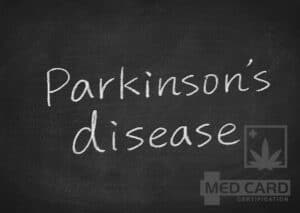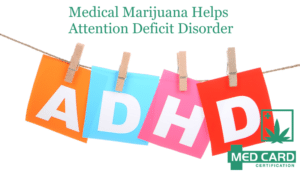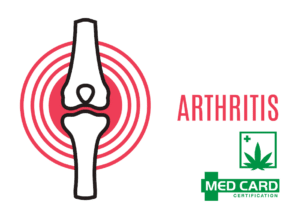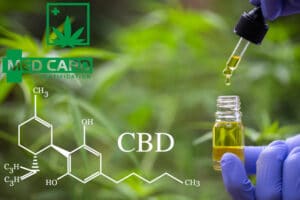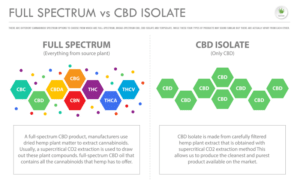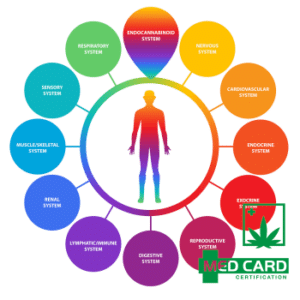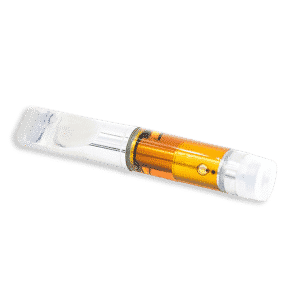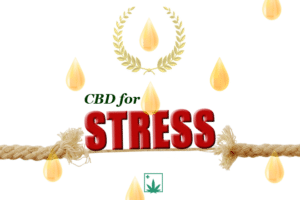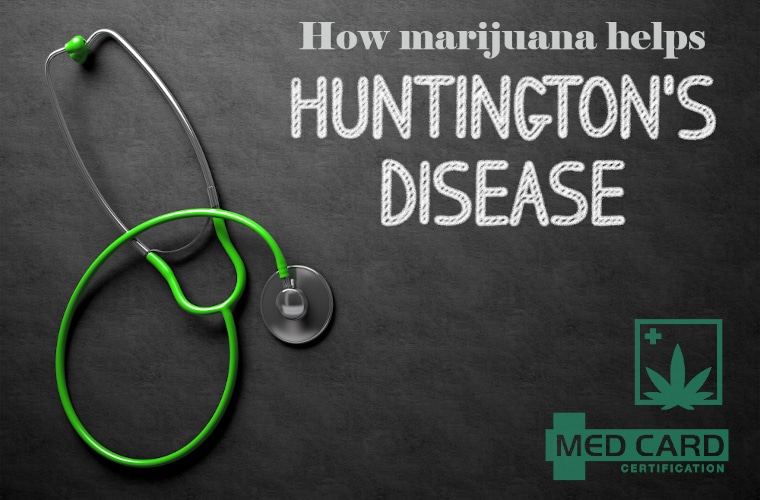
MMJ For Huntington’s Disease
- How medical marijuana helps treat Huntington’s Disease.
- How cannabinoids and terpenes affect Huntington’s.
- Studies on medical marijuana for Huntington’s.
- Best cannabis products for treating Huntington’s.
- Best marijuana strains for treating Huntington’s.
Can medical marijuana help treat Huntington’s disease? What effect does marijuana have on Huntington’s patients? And how is medical marijuana used to treat Huntington’s?
We’re going to answer these questions in this post.
Before we do that, however, for those who are not knowledgeable about the condition, let’s just briefly go over the symptoms of Huntington’s disease. Huntington’s affects the neurons in the brain, causing some to progressively break down over time. This, in turn, causes the progressive loss of motor function and cognitive impairment.
Physical & Emotional Symptoms
In addition to the physical symptoms, Huntington’s patients often develop debilitating emotional issues including irritability, depression, apathy, fatigue, and insomnia and can eventually lead to more serious mental illness.
Some of the standard medications used to treat Huntington’s include Tetrabenazine, antipsychotic drugs, Amantadine, Levetiracetam, and Clonazepam. These medications come with unwanted side effects such as drowsiness, nausea, and restlessness, increased depression, psychiatric conditions, swelling and discoloration in legs, worsening of cognitive symptoms, agitation, and worsening of overall symptoms.
Research data and anecdotal evidence are stacking up suggesting that medical marijuana is a safe and effective treatment for Huntington’s disease.
Many U.S. states now offer a medical marijuana card to Huntington’s patients. Medical marijuana doctors in these states are reporting that marijuana not only helps them deal with the anxiety and depression that often come with Huntington’s, it also helps to relieve some of the physical symptoms.
For many, Huntington’s patients, marijuana and other products derived from cannabis provide a much-needed lift in their quality of life without some of the side effects that come with prescription drugs.
How medical marijuana helps treat Huntington’s Disease
Researchers have found a distinct correlation between the progression of neural decay caused by Huntington’s and the body’s own endocannabinoid system (ECS). Studies indicate that as the disease progresses, cannabinoid receptors are destroyed. In fact, post-mortem studies on Huntington’s patients revealed a marked deficit of cannabinoid receptors.
Researchers are not entirely sure how marijuana interacts with the ECS. However, they do know that the system is very active in the brain.
A painful condition known as dystonia will often accompany a diagnosis of Huntington’s disease. In some cases, medical marijuana helps relieve the pain, as well as nausea and loss of appetite associated with dystonia. Moreover, weight loss can worsen other symptoms of Huntington’s patients. Appetite stimulation may help to slow the progress of the disease. Medical marijuana might also slow the progression of the disease substantially when used in the early stages.
Let’s explore the effects of some of the healing compounds found in medical marijuana.
Cannabinoids
Cannabis plants produce active compounds called cannabinoids. More than 100 cannabinoids are in the resinous flowers of the female cannabis plant. The two most common cannabinoids are tetrahydrocannabinol (THC), and cannabidiol (CBD).
The cannabinoids produced in cannabis are highly similar to those produced by our own endocannabinoid system. The human ECS is responsible for regulating an array of bodily functions such as appetite, sleep cycles, mood, and much more. Furthermore, cannabinoids have been shown to provide anti-inflammatory and antioxidant properties that can help protect neurons from damage.
THC is the major, mood-enhancing cannabinoid found in marijuana. Aside from its intoxicating properties, THC has exhibited neuroprotective properties. THC can also help to reduce the incidence and severity of involuntary movement. THC is also thought to relieve restlessness, insomnia, and irritability, and to improve overall mood.
CBD, is a nonintoxicating cannabinoid known to help relieve anxiety and pain. Moreover, CBD’s antioxidant properties help protect neurons from free radical damage.
Terpenes
Another category of active compounds found in medical marijuana is terpenes. Terpenes are the unsung heroes of cannabis medicine. Terpenes are not only responsible for the distinctive aroma and flavor of individual cannabis strains they also provide a wide range of medicinal benefits.
For example, a terpene called linalool is used to treat anxiety and depression. Another called pinene can help reduce pain and inflammation. Other terpenes found to be highly beneficial for Huntington’s patients include myrcene, limonene, beta-caryophyllene, terpineol, and humulene.
Studies on medical marijuana for Huntington’s Disease
In one research effort, reports from 22 studies on medical marijuana and Huntington’s disease were reviewed. Some studies reported significant improvements in neurologic symptoms often displayed in Huntington’s disease, such as spasms, chorea, insomnia, and tremors. Patients also reported significant improvements in sleep patterns, depression, and anxiety.
Below are excerpts from the publication titled “Medical Marijuana Effects in Movement Disorders, Focus on Huntington Disease; A Literature Review.”
“Outcome measures were changes in psychomotor, and sleep-related symptoms. The methodological quality of the included studies was evaluated. Results: A total of 22 studies were reviewed. There was strong evidence for significant improvement in the neurologic symptoms of spasms, tremors, spasticity, chorea, and quality of sleep following treatment with medical marijuana. Analysis of specific motor symptoms revealed significant improvement after treatment in tremors and rigidity. Furthermore, all pretreatment and post-treatment measures indicated a significant increase in the average number of hours slept. Conclusion: Larger scale studies are warranted to test the benefits of medical marijuana in HD patients. In the meanwhile, clinicians may consider prescribing medical marijuana as part of their strategy for better symptomatic treatment of patients with HD.”
“The medical properties of CBD that have been demonstrated in animal studies include antiemetic, anticonvulsant, antipsychotic, anti-inflammatory, antioxidant, anti-cancer, anxiolytic, and anti-depressant effects. As of July 2019, 33 states and the District of Columbia in the United States of America have enacted laws allowing marijuana use to treat certain medical conditions. The most common cause of death in HD is pneumonia, followed by suicide. In this study, we focus on the effects of medical marijuana on the symptoms of HD including emotional turmoil (depression, apathy, irritability, anxiety, obsessive behavior), cognitive loss (inability to focus, plan, recall or make decisions; impaired insight), and physical deterioration (weight loss, involuntary movements, diminished coordination, difficulty walking, talking, and swallowing). “
How to treat Huntington’s Disease with medical marijuana
When treating Huntington’s disease with medical marijuana, a combination of cannabinoids is most often the best option. The combined effects of THC, CBD, and terpenes can be greater than the sum of their individual effects. This phenomenon is known as the entourage effect.
Everyone responds differently to cannabinoids and terpenes. Some patients might benefit more from a strain that is high in THC, while others might get better results with a strain that is higher in CBD. It’s best to start with a strain that contains balanced levels of CBD and THC and then try some other strains over time to compare results.
Another option is to use strains that are high in THC and then supplement with hemp-derived CBD oil. While a medical marijuana card is required to purchase products containing THC in certain states, anyone can buy CBD oil online.
Smoking and vaping medical marijuana are the fastest methods for relieving the symptoms of Huntington’s disease. The effects are almost instantaneous. However, this may not be an option for patients with advanced Huntington’s.
Marijuana edibles including baked goods, candies, and cannabis-infused beverages have a slower onset time but offer longer-lasting effects. Edibles such as gummies and beverages will provide a faster onset time when eaten on an empty stomach.
Tinctures, oils, and capsules are convenient and easy to use. Tinctures and oils can be taken sublingually (under the tongue) for faster effect, or they can be added to foods. Capsules dissolve quickly in the stomach but take a little bit longer to have an effect.
New patients should start with the lowest possible dosage. If no adverse effects are felt, the patient can slowly work their way up to the most effective dosage. In most cases, small dosages actually work best. Effects can actually decrease at higher doses or symptoms can even be made worse. Although there are no cases of patients dying from an overdose of cannabinoids, cannabis is expensive and taking more than needed is just a waste of money.
Best medical marijuana strains for Huntington’s Disease
Every strain of cannabis produces a different profile of cannabinoids and terpenes. Huntington’s patients often achieve better results with some strains than others. Here are some medical marijuana strains that are recommended for Huntington’s patients.
- Harlequin is perfect for patients suffering from Huntington’s disease. This popular pure CBD strain won’t get users high. Harlequin is better when used during the day as it helps maintain alertness. Harlequin is a mood enhancer and is good for both the depression and anxiety that often accompany Huntington’s.
- Cannatonic is also popular with Huntington’s patients. It has a low THC and high CBD content that delivers a mellow, relaxed high. This strain is perfect for use by anyone suffering from neurodegenerative conditions that affect muscle coordination.
- Cheese is effective for treating depression, pain, headaches, and insomnia. Cheese induces a gentle, blissful state that enables patients to let go of the stressors of the day.
- Blue Dream is a legendary strain from California known for its many medical benefits. This invigorating sativa strain is highly effective at treating depression, pain, and nausea. The high THC content makes it ideal for consumption in the evening.
Again, every patient is different. Some patients might find that marijuana actually makes matters worse. For example, some patients might have increased anxiety when using strains that are high in THC. Some might get better results from using purified cannabinoids such as CBD isolate and THC isolate rather than full-spectrum products containing terpenes. Isolates can usually be purchased in tincture or capsule form. Some edibles are also made with isolates as cannabinoids are odorless and flavorless, unlike terpenes.
We hope this article provided some valuable information that can help patients suffering from Huntington’s Disease to make an informed decision as to how to treat their symptoms with medical marijuana. That being said, it’s always best to use marijuana under the guidance of a qualified medical marijuana doctor.
get a marijuana card for Huntington’s Disease

Sign Up for Medical Cannabis Today!
For potential patients, if you’re ready, we make it easy to connect with a medical marijuana doctor nearby or online. If you are interested in getting certified, please fill out the MMJ patient registration form below and press submit to get started. See if you qualify today!

MedCard Registration Form

Sources and additional reading:
- A double-blind, randomized, cross-over, placebo-controlled, pilot trial with Sativex in Huntington’s disease
- Neuroprotection by Cannabinoids in Huntington’s Disease
- THC for Huntington’s Disease? CB1 receptors important for more than drug use
- Medical Marijuana and Huntington’s Disease
- Therapeutic and Medicinal Uses of Terpenes
- Review: Medical Cannabis Shows Promise as an Adjunctive Treatment for Patients with Huntington Disease
- Medical Marijuana Effects in Movement Disorders, Focus on Huntington Disease; A Literature Review | Journal of Pharmacy & Pharmaceutical Sciences
- Therapeutic and Medicinal Uses of Terpenes
- Medical Marijuana and Huntington’s Disease
- Therapeutic and Medicinal Uses of Terpenes






